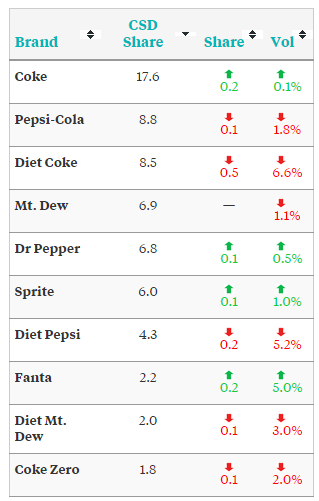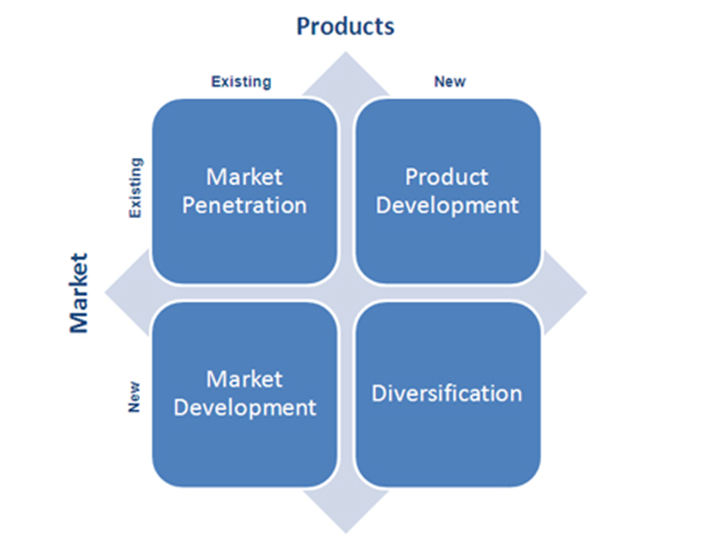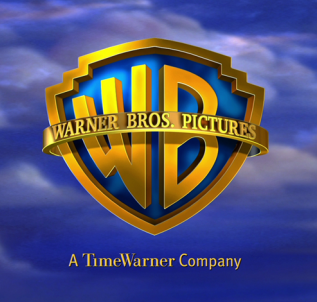Strategy

Walmart business strategy is based on ‘everyday low prices’ philosophy of the company. In other words, Walmart pursues cost leadership business strategy enabled by the economies of scale derived by the company in a significant extent. An efficient utilization of online sales channel contributes to the level of cost-efficiency of retail operations and about 75 percent of walmart.com sales come from non-store inventory[1]. Constant improvements of assortment, price and access are basis of Walmart business strategy. In simple terms, Walmart strives to offer the widest choice of products for the cheapest price, along with giving customers the opportunity of choosing the most convenient channel to facilitate the purchase. Wall Mart competitive advantage relies on cost leadership. Moreover, the strategic level management consistently aim to associate Wall Mart competitive advantage with price, access, assortment and experience. Since his appointment as CEO in February 2014, Doug McMillion introduced important changes in Walmart business strategy in the following three directions:[2] Increasing focus on customer services. In February 2015, the company announced a USD1 billion investment in U.S. hourly associates to provide higher wages, more training and increased opportunities to build a career with Walmart.[3] Improving groceries. Due to increasing level of health-consciousness of consumers, Walmart is attempting to increase its range of organic options and fresh produce. This change is more evident in the US market and it is being actively integrated into marketing communication message of the brand. Enhancing the flexibility of the shopping experience. It has been noted that “Wal-Mart is working to integrate its physical stores with the digital business”[4]. For example, thanks to the latest changes, customers are able to collect their online orders from stores and they can also get text reminders from the pharmacy. Generally, Walmart competitive advantage can be sustained in the global marketplace in long-term…

SWOT is an acronym for strengths, weaknesses, opportunities and threats related to organizations. The following table illustrates Coca Cola SWOT analysis: Strengths 1. Ownership of leading brands in soft drinks market segment 2. Brand value 3. Highly sophisticated distribution channel 4. Solid financial position Weaknesses 1. Lack of clear competitive advantage over PepsiCo 2. Brand image is associated with ‘high sugar’ carbonates 3. Lack of product diversification 4. Negative publicity Opportunities 1. Focusing on health & wellness 2. Engaging in product diversification and brand extension 3. Packaging innovation 4. Engagement in acquisitions Threats 1. Consumer avoidance from soft drinks due to health considerations 2. Loss of market share to PepsiCo 3. Negative publicity due to water usage patterns 4. Changes in currency exchange rates Coca Cola SWOT Analysis Strengths 1. The company owns and markets four of the five leading brands in the market – Coca-Cola, Diet Coke, Fanta and Sprite. As it is illustrated in Figure 1 below, in 2014, products belonging to Coca Cola Company possessed 36.1% market share in carbonated soft drinks segment in the USA. Significant market share is associated with a solid revenue stream that can be channeled to new product development and marketing initiatives to contribute to long-term growth prospects. 2. Estimated at $81.6 billion, Coca Cola brand value is the 3rd valuable brand in the world. This position provides the company a set of substantial benefits in terms of customer loyalty and bargaining power with suppliers. Moreover, a great brand value is a confirmation of efficiency of competitive advantage and it also provides grounds to increase profit margin. 3. Coca Cola Company has a highly sophisticated distribution channel that enables the sales of more than 2 billion unit cases of products across 28 countries and three continents. Coca Cola products are distributed via…

Today many innovations are associated with businesses as opposed to individuals. There are several reasons behind this phenomenon. Rapid development of knowledge management practices and processes in companies can be mentioned as one of the primary reasons behind many innovations being associated with businesses as opposed to individuals. Levels of sophistications of knowledge management systems in organisations have been increasing with rapid paces during last several years and this tendency has had positive correlation with creativity and innovation in most organisations. This argument can be better explained by referring to the concept of knowledge life cycle. According to this concept, knowledge life cycle comprises capture, verification, codification, integration, synthesis, dissemination and utilisation stages. Towards the end of the last stage organisational knowledge has a great potential to be used to make innovations of products, services and processes through collaboration and teamwork. Senior level management in increasing numbers of businesses do understand the importance of creativity and ‘thinking outside of box’ in terms of producing innovative products and services and attempt to shape organisational culture accordingly. One of the most innovative companies of the present day – Google is a suitable case study to justify this point. Specifically, Google offices around the globe are famous for their unique, innovative and highly informal design to encourage creativity amongst employees. Moreover, Google practices ’20 per cent rule’ according to which employees are free to spend one fifth of their paid time at work doing activity of their choice that does not have to be aligned with the corporate strategy (Kotter, 2013). Such a move enables Google to introduce innovative products and services in a regular basis allowing the company to diversify to a great extent. Many other companies are also following this path to varying extents in terms of creating informal work environment…

The twenty first century has been accepted as a century of information with the amount of information increasing with a geometrical progression, however this tendency is associated with a set of challenges that include protection of intellectual property which can be defined as any patterns of original creation that can be purchased or sold. Main forms of intellectual property protection are patenting, trademarks, trade secrets and copyright. Patenting is a popular way of protecting intellectual property, and patents are obtained for inventions that have potentials to generate revenues for inventor. Patents allow the patent holder to market the invention and patenting rights to the third party or license the invention when retaining intellectual property rights. Patents are considered to be intangible assets and many global businesses possess considerable amount of such type of asset. For example, gross carrying amount of patents of Ford Motor Company has exceeded USD 27 million by 2012 with the net carrying amount of USD 7 millions (Annual Report, 2012). Due to increasing numbers of innovations, and willingness of businesses to take advantage of these innovations there are many patent infringement lawsuits amongst many multinational corporations at any given time. For example, one of the most recent and noteworthy patent infringement disputes is the one between Finland-based global communications corporations – Nokia and HTC its Taiwan-based direct competitor. Patent infringement dispute initiated by Nokia for the use of Broadcom and Qualcom chip for HTC One model has attracted extensive media coverage due to its scale and significance and Nokia has emerged as a victor in the dispute with detrimental impacts on HTC in terms of damage to the brand image and future profits (Arthur, 2013). Moreover, there are instances where businesses decide to end their patent infringement disputes due to cost considerations of lawsuits, damage to…

Social security refers to the variety of forms of personal financial assistance to members of society. Being one of the core responsibilities of state, the provision of social security may be granted as a means of dealing with poverty, as a social protection due to financial vulnerability to circumstances, as redistribution tool of income, and as a means of expression of solidarity (Spicker, 2014, online). Major types of social security benefits include social insurance, benefits given to low-income individuals and families, disability benefits, pensions for aged people and discretionary benefits. In UK in particular social security policies are developed and implemented within the scope of Beverage Scheme which is associated with National Insurance accounts for each citizen. Core six principles of Beverage Scheme and National Insurance consist of comprehensiveness, categorisations of insurance, flat nature of benefits and contributions rate, the principle of adequacy and unified administration of National Insurance (Spicker, 2013, online). Additional social policy programs and initiatives aimed at facilitation of social security in UK include, but not limited to Guarantee Credit, Savings Credit, and Child Benefit. Development of social policies in relation to social security of citizens in modern times is associated with a substantial challenge which relates to the recent global economic crisis of 2007 – 2009. In other words, the crisis has necessitated budget reductions in many countries with obvious negative effects on the volume of social security spending, and this result in significant social policy problems. To be more specific, contemporary social policies in relation to social security need to be developed by governments in highly cost-effective manner, and the necessity behind social security reductions need to be communicated to citizens in an effective manner through the application of various communication channels in order to maintain popularity of the government. This task is highly difficult…

Competitive advantage has been defined as “something that the firm does better than its competitors that give it an edge in serving customers’ needs and/or maintaining mutually satisfying relationships with important stakeholders” (Ferrell, 2012, p.16). Core competency has been explained by Prahalad and Hamel (1990) as collective learning within organisations in terms of coordinating various kills and increasing the level of integration of multiple streams of technology. The concept of core competency is proposed by Prahalad and Hamel (1990) as collective learning within organisations in terms of coordinating various kills and increasing the level of integration of multiple streams of technology. Prahalad and Hamel (1990) argue that core competencies can be identified by asking following three questions: Firstly, which aspects of a product or service can provide it access to other markets? Secondly, which aspects of a product or service are perceived by potential and current customers as increasingly valuable? Thirdly, what are the specific elements associated with brand in general and/or product or service in particular that are difficult to be imitated by competitors? According to William and Curtis (2008) basing core competencies on product features and capabilities may prove to be counter-productive in terms of adapting to changes in external market environment. In other words, William and Curtis (2008) argue that core competency may become a core rigidity imposing threats to long-term growth prospects of the business. Practical implications of the concept of core competency are credited for the appreciation of importance of competitive advantage. It has been noted that “competitive advantage results when more customers become strong attached to the products of the organisation” (Sekhar, 2010, p.51). Boone and Kurtz (2013) discuss the role of imitability of competitive advantages for long-term growth prospects of businesses. Boone and Kurtz (2013) propose that low-order competitive advantages such as cost advantage…

Ansoff Growth matrix assists businesses to increase their revenues by offering four different growth options depending on products and markets. According to the matrix market penetration is a type of growth where the company attempts to increase the level of sales of existing products into current markets. Product development growth strategy, on the other hand, involves introducing new products into current markets. A situation where a business enters new market with its existing products is marked as market development growth strategy. Diversification growth strategy can be achieved through offering new products into new markets. For example, this principle is followed by Warner Bros., although the extent of utilisation of each individual growth strategy varies. Warner Bros. uses market penetration and product development strategies in the US in particular through periodically introducing popular entertainment shows. Due to the following to this strategy for the season of 2012 – 2013, Warner Bros. Television has accounted for more than 30 per cent of top shows on broadcast TV in the US (Annual Report, 2013). Acquisition of 55 per cent of Shed Media plc, one of the leading entertainment firms in the UK for USD 100 million in 2010 (Annual Report, 2013) can be referred in order to illustrate market development strategy of Warner Bros. Diversification strategy, as discussed above is engaged by Warner Bros. in relation to quality of content and the manners of delivery and consumption of films and entertainment products and services. References Annual Report (2013) Time Warner

Porter’s generic strategies are one of the most popular tools used when undertaking a competitive analysis in any industry. According to Porter (1985) companies can generally choose from two broad strategies, product differentiation or cost efficiency in broad market scope, or they may pursue product differentiation or cost efficiency strategies within a particular customer segment. To put it simply, companies usually choose to maximise their profit through offering products or services in lower prices, or offering superior quality products or services for higher price. And this can be done for the whole business or for a particular customer segment. A focus strategy “is defined by its emphasis on a single industry segment within which the orientation may be toward either low cost or differentiation” (Czinkota and Ronkainen, 2007, p.196). When pursuing a cost leadership strategy the company prices its products or services at a lower level than competition. Cost leadership strategy is associated with engagement in economies of scale and maintaining strict control of costs. Differentiation strategy, on the other hand, focuses marketing efforts on quality and uniqueness in relation to specific aspects of products or services. There are many advantages product differentiation strategy provides to the business. Product differentiation strategy increases the level of customer loyalty dramatically by mentioning the statistical data according to which US consumer loyalty to a single brand varies from 30 percent in batteries up to 70 percent in cigarettes. When conducting competitive analysis companies should seek following information: current strategy and future objectives of competitors, assumptions about the industry in which competitors believe, and strengths and weaknesses of competitors. Example: Application of Porter’s Generic Strategies to Warner Bros. According to Porter’s generic strategies differentiation in broad competitive scope marks the main competitive advantage of Warner Bros. The company engages in diversification in two levels:…

Five forces framework introduced by Porter (1980) has been acknowledged as an effective tool used in strategy formulation. Application of the framework is associated with analysis of five separate factors determine the overall level of competitiveness in the industry. Warner Bros. Porter’s Five Forces Analysis can be illustrated in the following manner: Threat of new entrants in film, television, and music entertainment industry has been traditionally moderate due to high levels of cost barriers. However, internet and rapid developments in information technology have increased the threat of new entrants to the industry through providing opportunities to lower cost barriers. Bargaining power of buyers is immense as there are no switching costs for the customers of Warner Bros. Buyer bargaining power is also fuelled by abundance of offers in films and manufacturing industry. Threat of substitute products for products offered by Warner Bros. is significant. Substitutions for Warner Bros. products include a wide range of video games, as well as, increasing popularity of major social networking websites such as Facebook, YouTube and Twitter. Bargaining power of suppliers is greater in films and entertainment industry compared to many other industries. Due to the unique nature of this industry famous actors can be classified as suppliers at the same time as serving as human resources. According to this approach, the success of sequels of famous Warner Bros. franchises such as Lord of the Rings, Batman, Harry Potter and Hangover is possible only through attracting A-list actors and actresses who have great bargaining power. Rivalry among existing competitors in global entertainment industry is intense and major companies competing in the industry along with Warner Bros. include Paramount Pictures Corporation, The Walt Disney Studios, Fox Filmed Industries and others. This portal also contains SWOT and PESTEL analyses for Warner Bros. References Porter, M. (1980) “Competitive…

Warner Bros. is a subsidiary of Time Warner and during the year of 2012 alone the company has produced 18 films in English language internationally and 23 films in local languages around the globe (Annual Report, 2012). The portfolio of Time Warner along with Warner Bros. comprises a set of famous media and entertainment brands such as Time, New Line Cinema, Sports Illustrated, TNT, People, TBS, Cinemax, HBO and CNN. Time Warner has generated the revenues of USD 28.7 billion during 2012, with operating income amounting to USD 5.9 billion (Annual Report, 2012). Warner Bros. represents Film and TV Entertainment segment of Time Warner and during the year of 2012 Warner Bros. has generated USD 12 billion revenues which accounts to 39% of Time Warner total revenues. Warner Bros. vision is associated with ‘sharing stories from the most talented and creative voices in the industry in a consistent manner’. Core mission of Warner Bros. has been specified as ‘creating and distributing great stories to audiences around the globe’. Warner Bros. produces feature films in two formats: on its own and through co-financing arrangements with other companies. “Warner Bros. feature film strategy focuses on offering a diverse slate of feature films with a mix of genres, talent and budgets” (Annual Report, 2012. p.24). In other words, product differentiation strategy is the main business strategy currently pursued by Warner Bros. strategic level management. Attempts to lead technological changes mark another important aspect of Time Warner and Warner Bros. corporate strategy. Specifically, the company is taking digital efforts to the next level according to its principles of Contents Everywhere, and consumers are being provided with access to service thorough increasing numbers of platforms such as mobile devices in innovative manners. Warner Bros. is one of the leading global entertainment companies that has successfully…
